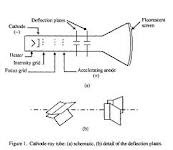ORTHOGONAL FREQUENCY DIVISION MULTIPLEXING:
APPLICATIONS:
cognitive radio, digital media broadcasting, in ultrawideband, highly secure transmission & payload circuitry of unmanned ariel vehicle.
Orthogonal Frequency Division Multiplexing or OFDM is a modulation
format that is finding tremendous use in today's radio communications scene.
OFDM has been adopted in the Wi-Fi arena where the 802.11a standard uses it to
provide data rates up to 54 Mbps in the 5 GHz ISM (Industrial, Scientific and
Medical) band. In addition to this the recently ratified 802.11g standard has
it in the 2.4 GHz ISM band. In addition to this, it is being used for WiMAX and
is also the format of choice for the next generation cellular radio
communications systems including 3G LTE and UMB. Orthogonal frequency-division multiplexing (OFDM) effectively mitigates
Inter Symbol Interference (ISI) caused by the delay spread of wireless
channels. Therefore, it has been used in many wireless systems and adopted by
various standards.
Orthogonal frequency
division multiplexing (OFDM) has become a popular technique for transmission of
signals over wireless channels. OFDM has been adopted in several wireless
standards such as digital audio broadcasting (DAB), digital video broadcasting
(DVB-T), the IEEE 802.11, local area network (LAN) standard and the IEEE
802.16, metropolitan area network (MAN) standard. OFDM is also being pursued
for dedicated short-range communications (DSRC) for road side to vehicle
communications and as a potential candidate for fourth-generation (4G) mobile
wireless systems.
Orthogonal
frequency-division multiplexing (OFDM) is a method of digital modulation in
which a signal is split into several narrowband channels at different
frequencies. The technology was first conceived in the 1960s and 1970s during
research into minimizing interference among channels near each other in
frequency.
In some respects, OFDM
is similar to conventional frequency-division multiplexing (FDM). The
difference lies in the way in which the signals are modulated and demodulated.
Priority is given to minimizing the interference, or crosstalk, among the
channels and symbols.
Orthogonal
frequency-division multiplexing (OFDM) is a method of encoding digital data on
multiple carrier frequencies. OFDM has developed into a popular scheme for
wideband digital communication, whether wireless or over copper wires, used in
applications such as digital television and audio broadcasting, DSL broadband
internet access, wireless networks, and 4G mobile communications. Orthogonal
Frequency Division Multiplexing (OFDM) is a method that allows to transmit high
data rates over extremely hostile channels at a comparable low complexity. Orthogonal FDM’s (OFDM) spread spectrum
technique distributes the data over a large number of carriers that are spaced
apart at precise frequencies. This spacing provides the “orthogonality” in this
technique which prevents the demodulators from seeing frequencies other than
their own. The benefits of OFDM are high spectral efficiency, resiliency to RF
interference, and lower multi-path distortion. This is useful because in a
typical terrestrial broadcasting scenario there are multi path-channels (i.e.
the transmitted signal arrives at the receiver using various paths of different
length). Since multiple versions of the signal interfere with each other (inter
symbol interference (ISI)) it becomes very hard to extract the original
information. OFDM is sometimes called multi-carrier or discrete multi-tone
modulation.
OFDM is a combination
of modulation and multiplexing. Multiplexing generally refers to independent
signals, those produced by different sources. So it is a question of how to
share the spectrum with these users. In OFDM the question of multiplexing is
applied to independent signals but these independent signals are a sub-set of the
one main signal. In OFDM the signal itself is first split into independent
channels, modulated by data and then re-multiplexed to create the OFDM carrier.
OFDM is a special case of Frequency Division Multiplex (FDM). As an analogy, a
FDM channel is like water flow out of a faucet, in contrast the OFDM signal is
like a shower. In a faucet all water comes in one big stream and cannot be
sub-divided. OFDM shower is made up of a lot of little streams.

